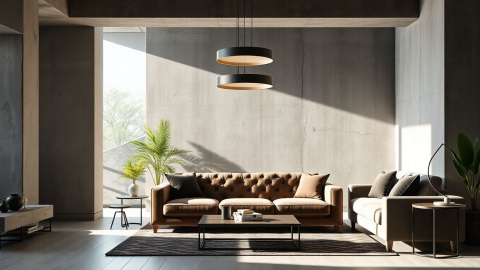Neoclassical Interior Design: Timeless Elegance Meets Modern Luxury
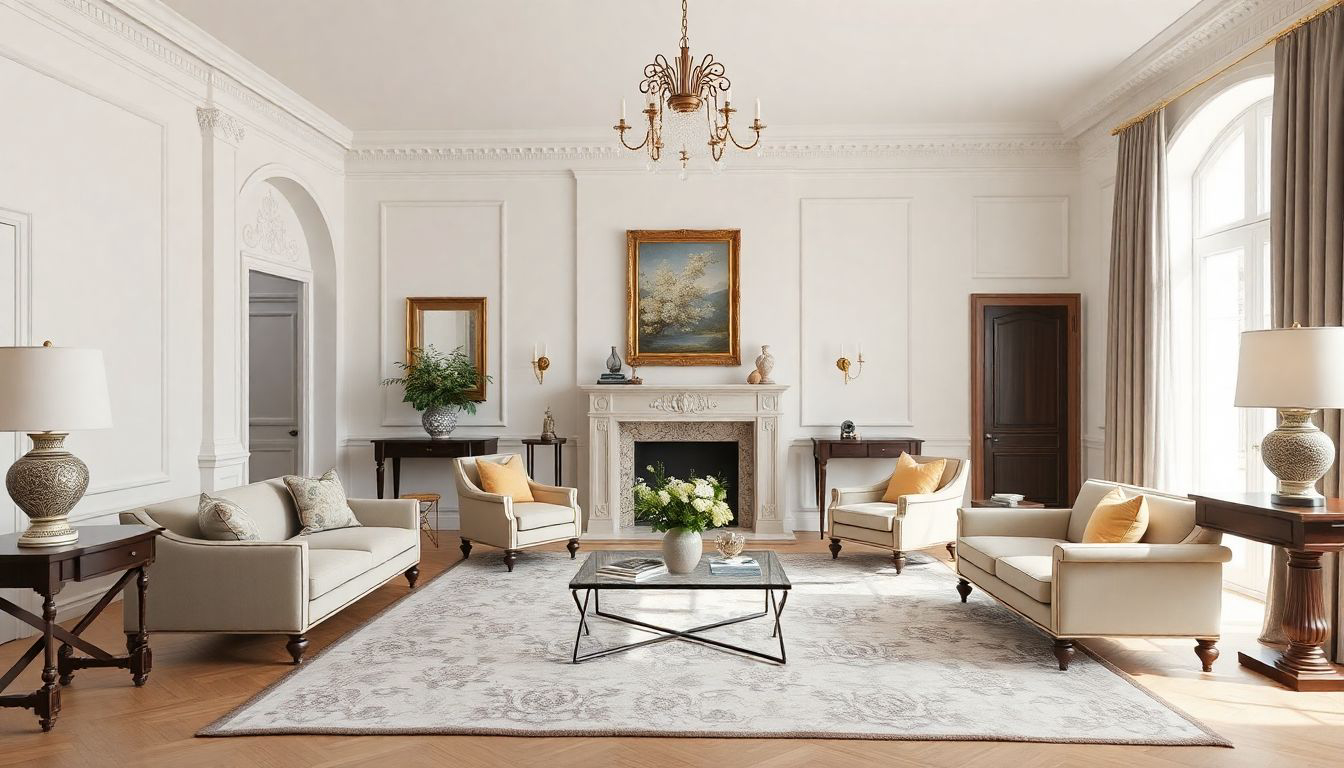
In the realm of interior design, few styles evoke the sense of timeless elegance and refined sophistication quite like neoclassical design. Rooted in the aesthetic principles of ancient Greece and Rome, yet reimagined for contemporary living, neoclassical interiors seamlessly blend the grandeur of classical architecture with the comfort and functionality demanded by modern lifestyles. This harmonious fusion of old and new creates spaces that are at once impressive and inviting, making neoclassical design a perennial favorite among homeowners, designers, and architects alike.
But what exactly makes neoclassical interior design so captivating, and how can one incorporate its essence into today's homes? Let's embark on a journey through the world of neoclassical interiors, exploring its key elements, design principles, and innovative interpretations that keep this style fresh and relevant in the 21st century.
The Foundations of Neoclassical Design
At its core, neoclassical interior design is a celebration of order, symmetry, and proportion. These fundamental principles, derived from classical architecture, form the backbone of neoclassical spaces, creating environments that feel inherently balanced and harmonious.
The Golden Ratio and Human Scale
One of the most fascinating aspects of neoclassical design is its deep connection to human proportions. As Brent Hull, owner of Hull Works, explains, "The Greeks (and then the Romans) looked to nature and man as a model for design, discovering in both places a proportion so perfect they called it the golden ratio." This mathematical relationship, roughly 1:1.618, appears throughout nature and the human body, and serves as a guiding principle in neoclassical architecture and interior design.
By incorporating the golden ratio and human-scale proportions into room layouts, furniture design, and architectural elements, neoclassical interiors create spaces that feel instinctively comfortable and visually pleasing. It's no wonder that we often find ourselves drawn to rooms designed with these classical principles, even if we can't immediately pinpoint why they feel so right.
The Classical Orders
Another cornerstone of neoclassical design is the use of the classical orders—Doric, Ionic, and Corinthian—which provide a framework for proportions and ornamentation. These orders, originally developed for columns and their corresponding entablatures, inform everything from the height of baseboards to the placement of crown moldings in neoclassical interiors.
Understanding and applying these classical rules allows designers to create spaces that feel cohesive and well-proportioned. For example, when determining the height of a chair rail, classical principles suggest that it should be placed at approximately 1/5 to 1/3 of the wall height, rather than the commonly misused 36-inch standard. This attention to proportion ensures that architectural elements work in harmony with the overall room dimensions.
Bringing Neoclassical Elements into Modern Homes
While the principles of neoclassical design are rooted in antiquity, their application in contemporary interiors is far from stuffy or outdated. Today's designers are finding innovative ways to incorporate classical elements into modern spaces, creating fresh and exciting interpretations of this timeless style.
Architectural Details as a Canvas
One of the hallmarks of neoclassical interiors is the use of architectural details as a foundation for the overall design. Panel moldings, crown moldings, and decorative ceiling roses provide a classical framework that can be dressed up or down depending on the desired aesthetic.
Interior designer Faye Toogood demonstrates how these elements can be reimagined for modern living in her London home. By painting all surfaces, including intricate moldings, in a uniform white, Toogood creates a clean, contemporary backdrop that still honors the home's classical bones. This approach allows the architectural details to add texture and interest without overwhelming the space, providing a perfect canvas for more eclectic furnishings and art.
Mixing Materials for Luxurious Textures
Neoclassical design is often associated with luxury, and one way to achieve this sense of opulence in a modern context is through the thoughtful mixing of materials. The juxtaposition of smooth marble surfaces with plush fabrics, or the combination of gilded accents with raw wood textures, creates a rich, layered aesthetic that feels both elegant and inviting.
In Milan, designer Emiliano Salci's home exemplifies this approach, blending "warm tones of brown, hazel, ochre and dusty orange" with sumptuous velvets and gleaming satins. This eclectic mix of materials and colors adds depth and interest to the classical framework of the space, resulting in an interior that feels both timeless and thoroughly contemporary.
Reimagining Classical Forms
Another way designers are breathing new life into neoclassical interiors is by reimagining classical forms in unexpected ways. For instance, traditional column shapes might be abstracted into sleek, minimalist sculptures, or classical friezes could be reinterpreted as modern art installations.
This approach is beautifully illustrated in the work of Luke Edward Hall, whose paintings combine "the physical likeness of visages and physiques found in classical statuary with a fauvist color palette." By playing with scale, color, and context, designers can create surprising and delightful moments that pay homage to classical aesthetics while feeling utterly of-the-moment.
The Art of Balance in Neoclassical Design
One of the key challenges in creating successful neoclassical interiors is striking the right balance between grandeur and livability. Too much ornamentation can feel overwhelming, while too little can leave a space feeling cold or unfinished. The secret lies in thoughtful curation and a keen eye for proportion.
Focal Points and Negative Space
In neoclassical design, the concept of focal points is crucial. Whether it's a statement fireplace, an ornate mirror, or a piece of sculptural furniture, these elements serve as anchors for the eye, providing a sense of structure to the room. However, it's equally important to balance these focal points with areas of negative space, allowing the eye to rest and appreciate the overall composition.
Designer Isabel López-Quesada's approach to her Madrid home exemplifies this balance. By combining "robust, rustic furniture" with carefully chosen decorative elements, she creates spaces that feel both grounded and elegant. The judicious use of open shelving and uncluttered surfaces allows the architectural details of the home to shine, while carefully selected objects add personality and warmth.
Lighting as a Design Element
Lighting plays a crucial role in neoclassical interiors, not just for illumination but as a design element in its own right. Traditional chandeliers and sconces can be paired with modern light fixtures to create a dynamic interplay between old and new. The key is to consider the scale and proportion of lighting fixtures in relation to the room, ensuring they complement rather than compete with other architectural elements.
For example, in a room with high ceilings and elaborate moldings, a grand chandelier can serve as a stunning focal point, drawing the eye upward and emphasizing the vertical space. In contrast, a more intimate space might benefit from the soft glow of wall sconces or table lamps, creating a warm and inviting atmosphere.
Color in Neoclassical Interiors
While neoclassical interiors are often associated with a neutral palette of whites, creams, and grays, color can play a significant role in bringing these spaces to life. The key is to use color thoughtfully, in a way that enhances rather than detracts from the architectural elements of the space.
Monochromatic Schemes
One approach to color in neoclassical design is to embrace a monochromatic scheme, using variations of a single hue to create depth and interest. This technique can be particularly effective in highlighting the texture and detail of architectural elements like moldings and paneling.
Designer Hugo Grisanti's home in Santiago, Chile, showcases this approach beautifully. By using "a symphony of cerulean, verdant and coral tones" throughout the space, Grisanti creates a cohesive and visually striking interior that feels both bold and sophisticated.
Accent Colors and Patterns
Another way to incorporate color into neoclassical interiors is through the use of accent pieces and patterned textiles. A richly colored rug, vibrant artwork, or patterned upholstery can add visual interest and personality to an otherwise neutral space, without overwhelming the classical architecture.
This technique is exemplified in Ben Pentreath's London home, where he combines classic William Morris wallpapers with colorful, abstract works by British artist Robyn Denny. The result is a space that feels both rooted in tradition and refreshingly contemporary.
Conclusion: The Enduring Appeal of Neoclassical Design
Neoclassical interior design continues to captivate and inspire, not just because of its inherent beauty, but because of its remarkable adaptability. By understanding and applying the fundamental principles of classical design—proportion, symmetry, and balance—today's designers and homeowners can create spaces that feel both timeless and thoroughly modern.
Whether you're drawn to the grandeur of fully realized neoclassical interiors or prefer to incorporate subtle classical elements into a more contemporary space, the key lies in thoughtful curation and a respect for the underlying principles of the style. By balancing ornate details with clean lines, mixing materials and textures, and using color and lighting to enhance architectural features, it's possible to create neoclassical-inspired interiors that are both impressive and inviting.
As we look to the future of interior design, it's clear that the lessons of neoclassical aesthetics will continue to inform and inspire. In a world that often feels chaotic and unpredictable, the order, symmetry, and timeless elegance of neoclassical design offer a welcome sense of stability and beauty—a reminder of the enduring power of good design to elevate our daily lives.
References and Further Reading
- Hull, B. (2012). The Right Way to Use Trim in Old Houses. Old House Journal.
- O'Shea-Evans, K. (2023). The Right Way to Lay Out Your Living Room: The 7 Formulas Interior Designers Rely On. The Wall Street Journal.
- Brodka, C. (2023). Neutrals in Interior Design: 30 Homes with an Understated Color Palette. ArchDaily.
- Frey, A. (2022). How to Make Classical Architecture Look Modern and Not Fussy. Dwell.
- Merrick, A. (2022). How Mixing Materials Brings Luxury to Interior Design. The Wall Street Journal.
These resources provide a wealth of information on neoclassical design principles, practical applications, and contemporary interpretations, offering valuable insights for anyone looking to explore this timeless style further.
More Articles
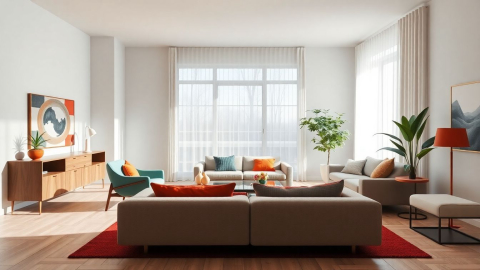
Bauhaus Interior Design: A Century of Influence and Innovation
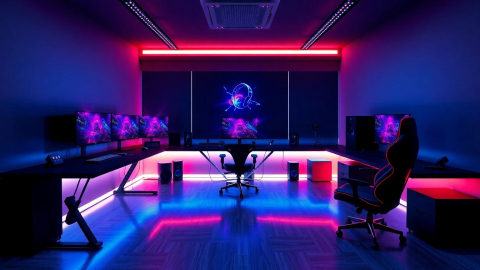
Designing the Ultimate Gaming Room: A Guide to Creating Your Perfect Digital Playground
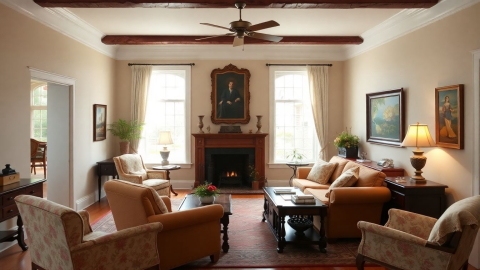
The Timeless Charm of American Colonial Interior Design: A Comprehensive Guide
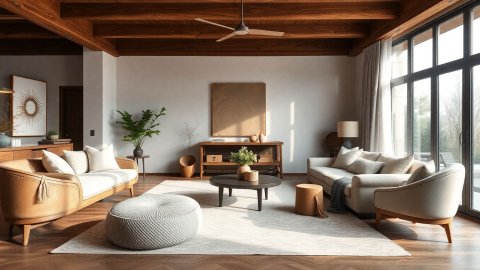
The Art of Nouveau: Crafting Timeless Elegance in Modern Interiors
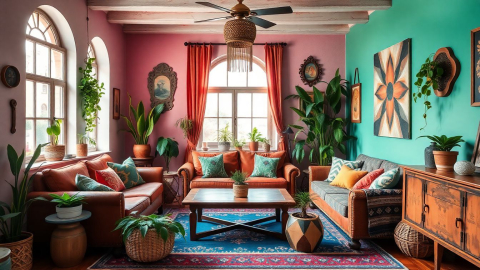
Embracing the Boho Spirit: A Comprehensive Guide to Bohemian Interior Design
